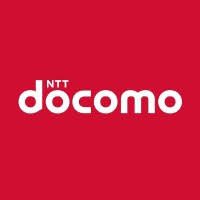The investment marks the beginning of a strategic alliance to commercialize HAPS in Japan and across Asia
A consortium of Japanese companies led by local carrier NTT Docomo and Space Compass Corporation, together with Mizuho Bank and the Development Bank of Japan, has committed to invest $100 million in AALTO HAPS, which manufactures and operates the stratospheric Zephyr High Altitude Platform Station (HAPS).
The investment will be made through the consortium’s investment vehicle, HAPS JAPAN Corporation.
The consortium noted that this investment marks the beginning of a strategic alliance to commercialize connectivity and earth observation services using HAPS in Japan and across other markets in Asia. It will also support the industrial and commercial roadmap for AALTO’s services, targeting launch in Japan and a global entry-into-service in 2026.
The consortium also stated that Zephyr can transform into a multi-functional “tower in the sk”y to provide low-latency 5G direct-to-device mobile connectivity services. Leveraging Airbus’s earth observation service, Strat-Observer, Zephyr can also be used to fulfill a range of monitoring, tracking, sensing and detection applications, the partners said. Due to this, AALTO is well-positioned for a variety of use cases, such as expanding mobile network operator (MNO) coverage and providing high-capacity connectivity including during Japan’s response to natural disasters, the consortium added.
Alongside this investment, AALTO and Space Compass will also sign commercial agreements that will deepen their engagement in Japan and Asia over the coming years.
Airbus Defence and Space will remain AALTO’s majority shareholder. The investment is subject to closing conditions and regulatory approvals, according to the consortium.
Takaaki Sato, CTO of NTT Docomo, said: “Working with our partners Space Compass, AALTO and Airbus, we are excited by the potential of HAPS-based NTN solutions. This technology brings together unique cutting-edge engineering with economics that are aligned to expand coverage to rural and remote areas, and support our collective response to natural disasters.”
“Non-terrestrial networks have the potential to transform Japan’s communications ecosystem, addressing access to connectivity in hard-to-reach areas while supporting our country’s response to emergencies. Japan has many remote islands and mountainous areas, where there are uneconomic connectivity solutions. Our strategic relationship with AALTO, underpinned by technological innovation and the opportunity of the connectivity market, will help us build a new telecommunications infrastructure in these areas and during an era of population decline,” said Shigehiro Hori, co-CEO of Space Compass Corporation.
NTT Docomo, together with its partners SKY Perfect JSAT Corporation, the National Institute of Information and Communications Technology (NICT) and Panasonic Holdings Corporation have recently conducted a 5G communication verification test in the 38 GHz band from an altitude of approximately 4 kilometers, using a small Cessna aircraft simulating the eventual use of high-altitude platform stations (HAPS).
In the trial to demonstrate the practical application of a 5G feeder link and backhaul line for HAPS, a Cessna aircraft was equipped with newly developed communication equipment that is expected to be deployed eventually in HAPS. Additionally, a lens-type antenna with an auto-tracking function was used as the HAPS ground station, Docomo said.
The trial established an aerial relay backhaul line between the Cessna aircraft, flying at altitude of approximately 4 km, and three ground stations, using the 5G New Radio (NR) standard with 38 GHz band radio waves.

